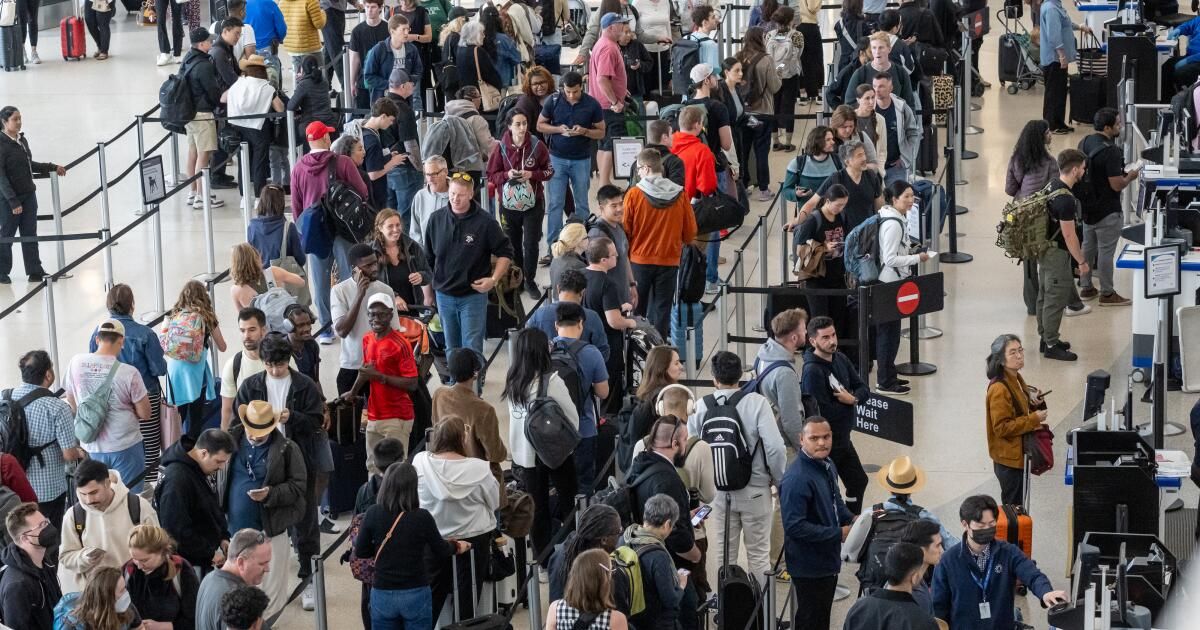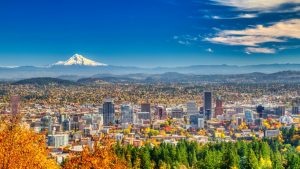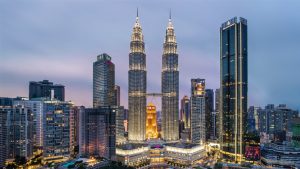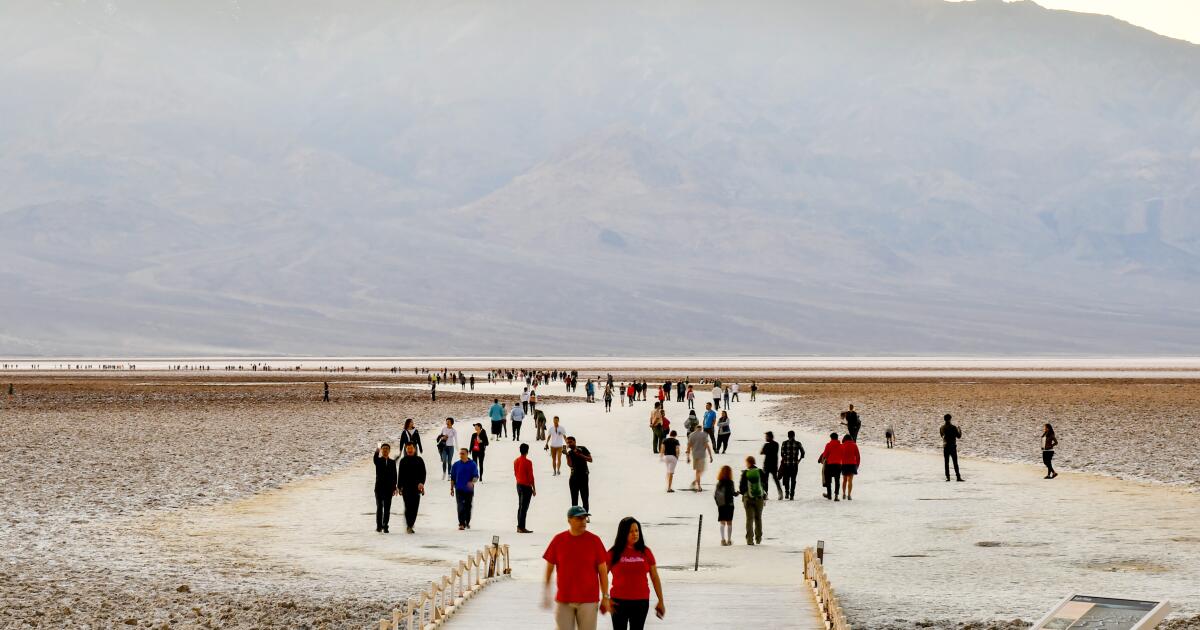Washington – The Trump administration invited executives of the White House travel industry in May for a meeting on federal plans for the 2026 World Cup, a historical event that in normal circumstances would attract a massive international tourism to the United States. It was a welcome meeting of President Trump and his team for an industry anxious to capitalize a rare opportunity and capture tourist dollars.
Welcome, at least, until vice president JD Vance made a joke.
“We will have visitors from about 100 countries. We want them to come, we want them to celebrate, we want the games to see. But when the time comes, they will have to go home. Otherwise, they will have to talk to Secretary Noem,” said Vance, referring to the Secretary of National Security and the head of compliance with edges.
Vance's comments, although joking, fell into a room full of experts more aware than most of the challenges that face trips in Trump's era.
“It is one of those moments in which you are almost, as, stops helping us,” said a participant in the meeting to The Times, gave anonymity to speak frankly.
The stories are flooding media abroad for denials and capricious arrests at the border crossings of the United States, which raises concern among international tourists for spending better dollars on vacation to the United States that can end up interrupted or never materialize. The Erraphic Tariff Policies of the White House have shaken the consumer's confidence that experts say they reliably track discretionary trips on trips. And a series of scares in American aviation, together with the cuts in the service of national parks and the National Meteorological Service, have made planning trips to some of the country's main destinations are less reliable.
In California, the nation number 1 tourist destination is expected that international visits decrease by 9.2% throughout the year, with the expected international expense that decrease 4.2%, according to a forecast. Posted last month for visiting California and tourism economy.
Around the Yosemite National Park, one of the most popular attractions in the country, the informed reserves fell “up to 50% of the weekend of the Fallen Day,” Caroline Beteta, president and executive director of Visión California told The Times.
The narratives of travel interruptions under the Trump administration have pauses American officials and industry experts in question not only with the immediate economic consequences of a slower summer season, but with the prospects for anemic assistance in the World Cup games next year and, beyond, by the Olympic Games in Los Angeles in 2028.
“Consumer confidence is certainly important,” said Geoff Freeman, president and executive director of the US Travel Association. “Creates a degree of uncertainty.”
'People should plan in advance'
Unlike much of the rest of the country, California is particularly susceptible to changing trends among Asia tourists, where tourism has not yet recovered from Covid-19 pandemic as robust as it has done in the Americas and Europe. Commercial flight restrictions on Russian airspace and the strength of the US dollar have not helped, Freeman said.
On the other hand, California benefits from a tourism industry that depends more on national travelers, the source of 80% of tourist dollars spent in the state, said Beteta.
“There is no doubt that there are widespread erroneous perceptions about the impacts on the travel experience, from reports on staff cuts to border arrests,” said Beteta. “The cuts in the national parks service, for example, do not affect the concessionaires of the Park, and those companies direct most of the services oriented to visitors, such as accommodation, restaurant services, transport service and much more. The erroneous perception of chaos in parks is a public relations problem that can have real consequences.”
The Buses of the Visitors Board in Yosemite National Park on May 20. The reserves informed around the Yosemite National Park fell 50% that leads to the weekend of the Fallen Day.
(Carlos Avila González / San Francisco Chronicle through Getty Images)
But Cassidy Jones, senior manager of the Visits Program in the National Parks Conservation Association, said the cuts to the parks are tangible and will directly affect the experience of visitors in the coming months, despite the efforts by leadership in the department of the interior to the document on the cracks.
“There may be less open entrance doors,” Jones said. “People must plan in advance and remember to be useful visitors of the park. Take the optional transport service. Come with supplies with you, since some facilities may be closed at the hours you do not expect, because they do not have the staff to keep them open. The bathrooms may not be interested if they are in cold places.”
In April, Interior Secretary, Doug Burgum, issued an order that ordered national parks to be “open and accessible” during the summer season, as fears grew that the personnel cuts implemented by the administration could become evident. Even so, the White House cuts and hiring freezing severely interrupted a cadence of seasonal hiring and training for rangers that usually begin around Christmas, Jones said.
“It is possible that some parks do not seem that many changes are evident, but there is a lot of work that is not being done in the background,” Jones added. “The request basically required that although the parks have experienced devastating personnel, they must present a kind of public appearance that everything is commercial as usual. That means attracting the superintendents to work in the visitors centers, the science and research management staff to ensure that the facilities are clean, biologists that clean the bathrooms, that kind of thing.”
Flight interruptions are expected
Twenty years ago, approximately half of the flight delays were caused by uncertainty about the weather, a number that has fallen to 33% in recent years thanks to a better prognosis quality. That progress is beginning to be reversed due to the widespread cuts in talent, and travelers will be feeling sooner rather than later, said Rick Spinrad, who served as administrator of the Oceanic and Atmospheric National Administration under President Biden.
The Trump government efficiency program, known as Dege, has eliminated hundreds of positions in NOAA, even in the National Meteorological Service, and is proposing a 25% cut in the agency's budget.
“In the short term, this summer, when people travel for longer, we can see a degradation of services. You may see more delayed flights, flights more impacted by the weather,” said Spinrad.
But Spinrad's concern is that the cuts to NOAA will soon feel much more deeply, at the local level, among emergency administrators, local transport departments and public health centers that have reliable forecasts to draw their work.
“What we are going to begin to see, I think, is the erosion of NOAA's ability to provide services in the degree to which people had become accustomed,” he said.
Spinrad visited southern California at the end of May and was surprised by the number of people who raise concern for the agency's ability to continue predicting events of the Atmospheric River, with all its implications in public safety, the operations of the reservoirs and the hydroelectric energy. These forecasts depend largely on the work of a satellite operations installation that was destroyed by the Trump administration.
And the capacities of the National Meteorological Service to predict phenomena such as the winds of Santa Ana, which fed devastating fires in Los Angeles in January, are at risk, with 30 of the 122 Meteorological Forecasting offices of the agency that operate without meteorologists and with cut technicians, he said.
“I know it will degrade, just by definition. Everything will degrade,” Spinrad added. “All NOAA predictive capabilities will degrade as a result of these cuts.”
Mark Spalding, president of the Ocean Foundation, warned that the aviation industry would soon face interruptions as NOAA's abilities continue to decrease.
“We will see effects this summer, because they have shot many people and closed so much activity,” said Spalding.
“There are many services in which many people trust what NOAA provides: climate prediction, ocean observation, early warning of the Tsunami, monitoring of the Hurricane Center,” he added. “There are many things this summer that could be affected in a similar way to what we are seeing in the control of air traffic due to the sudden loss of personnel there.”
Even so, Freeman, of the US Travel Association, expressed optimism for the US tourism sector. In the future, pointing out that he and his counterparts are in “regular communication” with the Trump administration on the winds against which the multimillion dollar industry face.
“We have no shortage of challenges in the travel industry,” he said. “I think the image at this time to travel is uncertain, in the worst case.”
“For every challenge you see, there is an opportunity on the other side,” he added.












